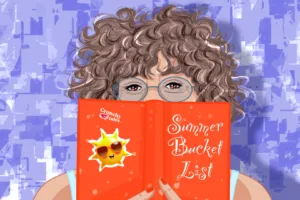The Never Ending Power Of Quilting
Forget your grandma’s bedding. Quilting is back in all forms and shapes, ranging from family heirlooms to luxury products and artwork.
Maybe it’s because it can be so personally satisfying or probably because it’s a creative way to express oneself, nowadays quilting is much more than just fabric joined together. It can be an expression of love and style, sympathy, joy, hope and caring or even challenge.
Modern quilters may come from all walks of life and ages (although, according to a survey funded by Premier Needle Arts, the age band in which quilters start this hobby more actively is likely in their mid-forties), making the most of unusual textures and materials combined in unexpected ways and sizes to suit their individual tastes while capturing their unique personality.
Many of them take inspiration from wider social movements such as sustainability and quilting for change, while others explore fun new techniques such as slowing it down with hand quilting or expanding their quilting skillsets using funky chenille or intricate paper piecing.
Passed down from mothers to daughters, this art is now having a come back being learned with the help of online classes, books and clubs, forums and groups – like Modern Quilt Guild.
Whether you follow traditions relying on a grid of regularly repeating designs, or challenge yourself with modern patterns that go off the grid and use asymmetry, and a more improvisational style with unusual arrangements of blocks and setting, quilting is certainly not a hobby to be sniffed at.
Yes, it might be a slow-paced escape in this fast and hectic world, but it’s also a way to reclaim power and identity, a chance for many women to express not only their creativity but also their views and politics through an art form centred around community.
In “Quilting: The Fabric of Everyday Life“, sociologist Marybeth Stalp opens a window on quilting as both art and craft, a time of growth and change, especially for midlife women.
Quilts can mean something to the maker that might not be obvious to others – she explains to Aging Horizons Bulletin-. Along the same line, quilts made over the course of a lifetime are likely to reflect life’s ups and downs. So on the downside, women have shared divorce quilts, breast cancer quilts and other mourning quilts. And on the upside, they have shared quilts celebrating births, birthdays, graduations, weddings and anniversaries. While it’s true, some continue to view quilting stereotypically as something old ladies do, quilting can enhance and change women’s lives. I like to think that quilting can challenge and enrich the family and that it can help women to become more comfortable with their creative selves.
And now an art exhibition “In America: A Lexicon of Fashion“, at the Metropolitan Museum of Art (Anna Wintour Costume Center) until the 22 of September, gives this hobby the right acclaim by featuring great examples of quilted textiles from the 1940s to the present and being described as a “democratic art” practised by people of all financial, racial and religious backgrounds throughout the country’s history.
In case you want to understand such a trend in modern times, consider that not only does quilting carry on a time-honoured tradition of artistry and skill, but it also brings people together and allows us to express ourselves using fabric and textile art. What’s more, the repetitive motions of quilting and sewing help to relax our brain, which lessens the flight or fight response triggered by stress. The sense of accomplishment quilters feels when completing a project also ties directly into stress relief, as it boosts confidence in our creative abilities. Also, playing with different geometric shapes helps develop important problem-solving skills.
According to a study by the Journal of Public Health, mastering new techniques and overcoming challenges led to feelings of satisfaction and boosted self-esteem, particularly for those whose social roles had changed. And because quilting requires exact measurements, placement of specific patterns, and the use of problem-solving, the brain is consistently engaged and developing.
What’s for sure, it’s great for our mental well-being and even though quilting seems to be a trendy pastime these days, and though our grandmas did the craft as a necessity, it seems to be a fun event not only for today’s creative women but also men (should they choose).
Like this post? Support Us or Sign up to our newsletter to get more articles like this delivered straight to your inbox!





